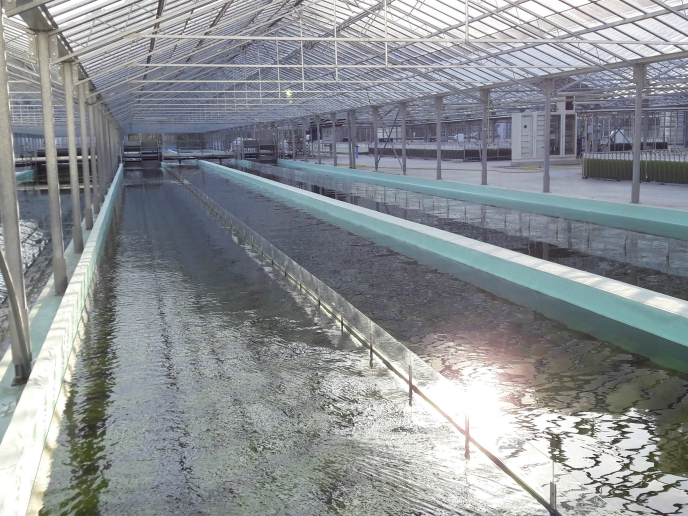Symbiotic algae-bacteria treat saline wastewater
The food and drink industries produce vast amounts of waste water each year. Although the effluents are controlled by EU Directives, some parts of the sector – notably canned fish, meat processing, pickled vegetables, tanneries, aquaculture and others – produce very salty water with high levels of organic matter. Not only is this effluent harmful to the environment, but it is also difficult and expensive to treat, especially for small businesses. “The main cost in wastewater treatment is the energy needed to oxygenate the wastewater for the bacteria breaking down organic waste to breathe,” notes Dr Jose Ignacio Lozano, who had been leading the EU-funded project SALTGAE. By adding algae into the water treatment equation, the project aims to reduce the total cost of water treatment by 25 %. It gets even better: the process produces energy in the form of biogas (methane) that can be used for power applications and recover nutrients (mainly phosphorous and nitrogen) that in excessive amounts can pollute the water. A well-orchestrated synergy SALTGAE’s modular water treatment technology purifies saline wastewater containing considerable amounts of organic matter, while also valorising the resulting biomass into different by-products. In a first stage, wastewater with a high biochemical oxygen demand (DBO) is treated by a two-phase anaerobic digestion process. In this stage, organic matter is converted into biomass, thanks to the carefully selected bacteria that can adapt to high saline levels. Another stage involves passing this partially cleaned water to an algal pond, where a consortium of algae and bacteria recover nutrients (phosphorous and nitrogen), valorising algae extracts into chemicals, edible coatings, and new construction materials. Working symbiotically, the bacteria transform the remaining organic matter into CO2. This is consumed by the algae, which convert it into biomass using solar energy. At the same time, the bacteria are fed oxygen by algae. The third stage of SALTGAE’s treatment technology involves using membrane technology to remove salinity and aid the reuse of high-quality water. Opportunities for SMEs Three demonstration sites representing three different scenarios are now running. “Using a combination of bacteria and algae allows us to save 90 % of the energy required for aeration, while also recycling CO2 that would otherwise be released into the atmosphere. What’s more, the produced algal biomass can be further utilised and sold,” adds technical manager Mr Robert Reinhard. The site in Italy is treating effluent from the milk industry, a plant in Slovenia is dealing with tannery waste water, while the site in Israel is processing waste from fish farming. The algal biomass produced in all sites was successfully tested in several products ranging from feed for piglets, protective edible coatings for fruit or bio-composites for 3D printing. SALTGAE provides significant benefits for SMEs, making it possible for them to treat their effluent more economically and effectively with the sale of biomass as a new source of revenue. “Talking of numbers, a cubic metre of municipal wastewater requires up to 7 kWh for removing dissolved organic pollutants; we typically spend an additional 0.5 kWh for aeration,” explains Dr Lozano. “Although SMEs make up only 5 % of the EU’s food and drink sector, they total 15 000 business with a combined turnover of EUR 64 billion, so the market is substantial,” concludes Mr Reinhard.
Keywords
SALTGAE, algae, bacteria, wastewater, aeration, saline, food and drink industry, organic waste, biogas, anaerobic digestion



